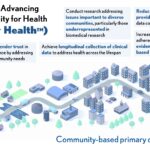In today’s fast-paced business environment, where organizations face increasing pressure to do more with less, understanding the real impact of career development programs is more critical than ever. The question of how to effectively measure the success of these programs is frequently raised by businesses looking to optimize their investments in employee growth. This article aims to provide a comprehensive guide to measuring the effectiveness of career development programs, drawing upon key performance indicators (KPIs) and practical examples. This discussion builds upon previous explorations of trends and common challenges in implementing career development programs, offering actionable insights for organizations seeking to maximize their talent development initiatives.
Career development programs are not just a perk; they are a strategic imperative that empowers employees and significantly contributes to organizational success. To determine if these programs are truly delivering on their promise, we need to employ specific, measurable KPIs that reflect both employee-centric outcomes and tangible benefits for the organization. It’s crucial to remember that the most relevant KPIs are those that directly align with an organization’s overarching strategy and the specific business objectives that prompted the implementation of the career development initiative in the first place. What works for one company might not be the ideal approach for another. However, let’s delve into a range of KPIs that you can consider, complete with examples to illustrate their practical application and measurement.
Key Performance Indicators (KPIs) to Evaluate Career Development Program Effectiveness
To effectively gauge the success of your career development program, consider tracking these key performance indicators:
1. Employee Retention Rates
Why It Matters: Employee retention is a strong indicator of employee satisfaction and loyalty. High retention rates suggest that employees perceive value in their employment experience, including the opportunities for growth and development provided by the organization. A robust career development program significantly contributes to this positive perception, fostering a sense of future and belonging within the company.
Example KPI: Compare employee retention rates before and after the implementation of your career development program. For example, if your organization experienced a 70% retention rate prior to launching the program and observes an increase to 85% within one to three years post-implementation, this strongly suggests a positive impact from the career development initiatives. This is particularly impactful if the improvement is noted amongst high-potential employees, those crucial for future leadership and innovation. It’s important to consider external factors and other retention strategies implemented concurrently to isolate the specific impact of the career development program.
Alt Text: Chart showing employee retention rates increasing after career development program implementation, illustrating program effectiveness in employee retention.
2. Employee Engagement and Satisfaction
Why It Matters: Engaged and satisfied employees are more productive, innovative, and committed to the organization’s goals. Career development opportunities are a significant driver of both engagement and satisfaction. When employees feel their employer is invested in their growth, their overall job satisfaction and dedication to the company typically increase.
Example KPI: Implement regular employee surveys to measure engagement and satisfaction levels, specifically focusing on career growth opportunities. For instance, if the satisfaction score related to career growth opportunities rises from 65% to 80% after program implementation, it demonstrates that employees perceive the program as beneficial and are more satisfied with their development prospects within the organization. These surveys can include questions about perceived opportunities for advancement, satisfaction with training resources, and overall feelings about career support.
3. Internal Promotion Rates
Why It Matters: Promoting employees from within is a powerful signal that your organization is successfully developing talent and providing clear career pathways. It validates the effectiveness of your career development program in equipping employees with the necessary skills and competencies for more advanced roles. Higher internal promotion rates also reduce recruitment costs and time, while boosting employee morale and demonstrating a commitment to employee growth.
Example KPI: Track the rate of internal promotions over time. If the annual number of internal promotions increases from 10% to 20% following the implementation of the career development program, it indicates that the program is effectively preparing employees for positions of greater responsibility. This metric shows a direct link between the program and tangible career progression for employees.
Alt Text: Graph depicting an increase in internal promotion rates after the introduction of a career development program, highlighting the program’s success in fostering internal talent growth.
4. Program Participation Rates
Why It Matters: High participation rates are a fundamental indicator of employee interest and engagement in the career development opportunities offered. If employees are actively participating in workshops, mentoring sessions, and other program components, it suggests that the program content is relevant, accessible, and appealing to their developmental needs. Low participation, conversely, might signal a need to reassess program design or communication.
Example KPI: Measure the percentage of employees actively participating in various components of the career development program, such as workshops, online courses, or mentoring pairings. For example, if 75% of employees engage in at least one development activity annually, it demonstrates a strong level of interest and engagement with the provided opportunities. Track participation across different departments and employee levels to identify areas of strength and potential improvement.
5. Skill Development and Certification Achievements
Why It Matters: The acquisition of new skills and professional certifications is a concrete and measurable outcome of many career development programs, particularly those focused on enhancing specific competencies. Tracking these achievements provides direct evidence of the program’s impact on employee skill sets and their professional qualifications, enhancing both individual capabilities and organizational capacity.
Example KPI: Monitor the number of employees who complete training courses, earn new certifications, or achieve specific skill-based milestones as a result of the career development program. For instance, if 50 employees earned industry-recognized certifications in the past year, compared to 20 in the previous year before the program was fully implemented, it signifies the success of skill development initiatives within the program.
6. Performance Improvement Metrics
Why It Matters: Ultimately, career development programs should contribute to improved employee performance and productivity. Enhanced performance metrics demonstrate the practical impact of development initiatives on employee effectiveness and their contribution to organizational goals. This KPI links career development directly to business outcomes, justifying the investment in these programs.
Example KPI: Assess changes in employee performance reviews and key productivity metrics following participation in career development activities. If average performance ratings improve by 15% after employees engage with the program, it suggests that the development activities are effectively enhancing employee capabilities and contributions. Look for improvements in areas such as efficiency, quality of work, and goal attainment.
Alt Text: Bar chart showing a 15% increase in performance ratings after participation in a career development program, illustrating the program’s positive impact on employee performance.
7. Strength of the Talent Pipeline
Why It Matters: A robust talent pipeline is essential for organizational sustainability and future success. Career development programs play a critical role in building this pipeline by identifying and preparing high-potential employees for future leadership roles and critical positions within the organization. A strong talent pipeline ensures that the organization is well-prepared for succession planning and can effectively address future leadership needs.
Example KPI: Evaluate the readiness of employees to fill critical roles and leadership positions within the organization. For example, if succession plans are developed and actively maintained for 90% of key positions, it demonstrates that the organization is proactively preparing for future leadership transitions and has a strong internal talent pool ready to step up. This KPI reflects the long-term impact of career development on organizational capacity and stability.
8. Return on Investment (ROI) of Training and Development
Why It Matters: Calculating the ROI of career development programs is crucial for justifying the investment and demonstrating the program’s financial impact to stakeholders. While challenging to calculate precisely, understanding the ROI helps organizations assess the financial efficiency of their development initiatives and optimize resource allocation. A positive ROI demonstrates that the program is not just beneficial for employees but also contributes to the organization’s bottom line.
Example KPI: Calculate ROI by comparing program costs against tangible benefits such as reduced employee turnover costs, increased productivity, and improved efficiency. For instance, if a career development program costs £100,000 but leads to £300,000 in savings through reduced recruitment expenses and gains in productivity, the ROI is demonstrably positive. This calculation requires careful tracking of costs and benefits and may involve estimating indirect benefits.
9. Employee Feedback and Testimonials
Why It Matters: While quantitative metrics are essential, qualitative feedback from program participants provides invaluable insights into the program’s perceived effectiveness and areas for improvement. Direct feedback captures the employee experience and can reveal nuances that numbers alone cannot. Positive testimonials and constructive suggestions help refine the program and ensure it meets the evolving needs of employees.
Example KPI: Collect employee feedback through surveys, focus groups, and individual testimonials. Positive feedback, such as employees highlighting significant career advancements or skill development directly attributed to the program, underscores its value. Constructive criticism provides actionable insights for program refinement and improvement. For example, an employee testimonial stating a significant career boost after attending a leadership workshop vividly illustrates the program’s impact.
9 Key KPIs for Measuring Career Development Program Success
In summary, the nine key KPIs to effectively measure the success of your career development programs are:
- Employee Retention Rates
- Employee Engagement and Satisfaction
- Internal Promotion Rates
- Program Participation Rates
- Skill Development and Certification Achievements
- Performance Improvement Metrics
- Talent Pipeline Strength
- ROI on Training and Development
- Employee Feedback and Testimonials
Regularly monitoring these KPIs enables organizations to comprehensively assess the effectiveness of their career development programs. This data-driven approach allows for informed decision-making, continuous program improvement, and better alignment with the needs of both employees and the organization. For example, if KPI data reveals that a mentorship component of the program is particularly effective, the organization might choose to allocate more resources to expand and enhance this aspect.
However, it’s vital to remember that meaningful changes and improvements often take time to materialize, and relying solely on quantitative metrics may not capture the complete picture. Ultimately, the true success of career development programs is reflected not only in measurable numbers but also in the individual stories of personal and professional growth they facilitate. Sharing these success stories with key decision-makers is a crucial aspect of advocating for and sustaining career development initiatives. By cultivating an organizational culture where employees feel genuinely supported in their career journeys, companies can build a more engaged, skilled, and motivated workforce, driving long-term success and fostering a culture of continuous innovation.

